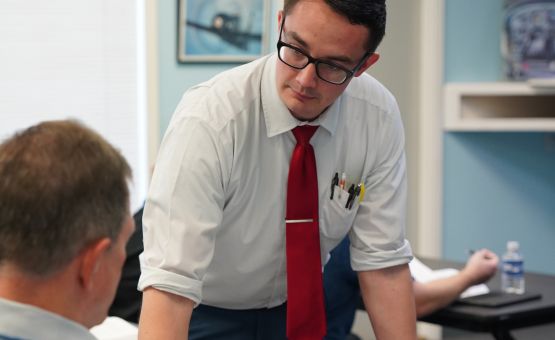Building flight time versus gaining experience as a low-time commercial pilot is a critical topic in the aviation industry today. With the requirement of 1,500 flight hours to apply for an Airline Transport Pilot license, the focus has shifted to how quickly these hours can be accumulated versus the quality of experience gained during this time. The tragic Colgan crash in Buffalo, New York, prompted Congress to set the minimum 1,500-hour requirement to ensure that pilots hired by airlines possess the necessary experience to safely operate commercial flights. However, the lack of specific guidelines on how pilots should gain these hours has led to airlines hiring pilots with limited instrument experience and inadequate teaching experience.
Flight instructors play a vital role in the aviation industry by not only teaching aspiring pilots the necessary skills to become competent aviators but also by instilling a culture of safety and professionalism. These instructors typically have between 850 and 1,250 hours of real teaching experience, which is invaluable in shaping the next generation of pilots. Teaching requires a deep understanding of the subject matter and the ability to effectively communicate complex concepts to students. Therefore, having experienced instructors with a proven track record of safe flight operations is crucial for ensuring the overall safety and proficiency of pilots.
The comparison to the boating industry, where individuals are required to have a minimum of 360 days at sea to qualify for a captain’s license, highlights the disparity in the requirements for gaining experience in aviation. While the US Coast Guard mandates time at sea, they do not specify the type of experience required, which can lead to potential gaps in the skills and knowledge of boaters. This lack of specificity is also evident in the aviation industry, where some pilots are merely accumulating hours without gaining meaningful experience or expertise.
Recent incidents involving major airlines such as Southwest and United, both of which experienced low-altitude alerts, underscore the importance of having qualified and experienced pilots in the cockpit. The NTSB investigations into these incidents are likely to reveal that human error played a significant role. By prioritizing experience and proficiency in pilot hiring practices, airlines can mitigate the risks associated with human error and ensure the safety of passengers and crew.
Building flight time is a critical aspect of a pilot’s career development. However, gaining the right kind of experience is equally important to ensure that a pilot is equipped to handle unexpected situations and emergencies. Incidents such as United Airlines Flight 232 in Sioux City, Iowa, and US Airways 1549 underscore the importance of experience in the cockpit. These incidents required highly experienced flight crews who were dedicated to safety and had undergone consistent education and training.
In the case of United Airlines 232, the flight crew faced a daunting challenge when one of the engines experienced catastrophic failure, resulting in a total loss of hydraulic fluid. This meant the crew had limited control over the aircraft, and the situation was extremely precarious. Captain Al Haynes and his team demonstrated exceptional skill and professionalism in managing the crisis. Despite the odds stacked against them, they used the thrust from the remaining engines to maneuver the aircraft and eventually land it in Sioux City. Their experience and quick thinking played a crucial role in ensuring the safety of the passengers and crew, with 184 out of 296 passengers surviving the ordeal.
Similarly, the incident involving US Airways 1549, also known as the “Miracle on the Hudson,” highlighted the importance of experience in dealing with emergencies. Shortly after takeoff, Captain Sullenburg and his flight crew lost both engines due to a bird strike. Facing a life-threatening situation, the crew had to make split-second decisions to ensure the safety of everyone on board. Thanks to their extensive training and experience, they successfully landed the aircraft in the Hudson River, allowing all passengers to evacuate safely.
These incidents serve as powerful reminders of the critical role that experience plays in aviation. Pilots with significant, meaningful experience are better equipped to handle unforeseen circumstances and make sound decisions under pressure. While building flight time is important for honing piloting skills, gaining teaching experience as a flight instructor is essential for developing the judgment, decision-making ability, and situational awareness required to navigate complex and high-stress situations.
To minimize human error and enhance safety in the aviation industry, airlines must prioritize hiring experienced flight instructors who are dedicated to professionalism and excellence. These instructors serve as mentors to aspiring pilots, guiding them through the complexities of aviation and instilling in them the values of safety, proficiency, and continuous learning. Just as airlines are responsible for ensuring that pilots are well-trained, pilots themselves must recognize their duty to protect passengers. The role of a pilot is both highly respected and carries the profound responsibility of safeguarding the lives of those who place their trust in them. By investing in the development of skilled and knowledgeable pilots, airlines can ensure the highest standards of safety and operational excellence in the industry.










